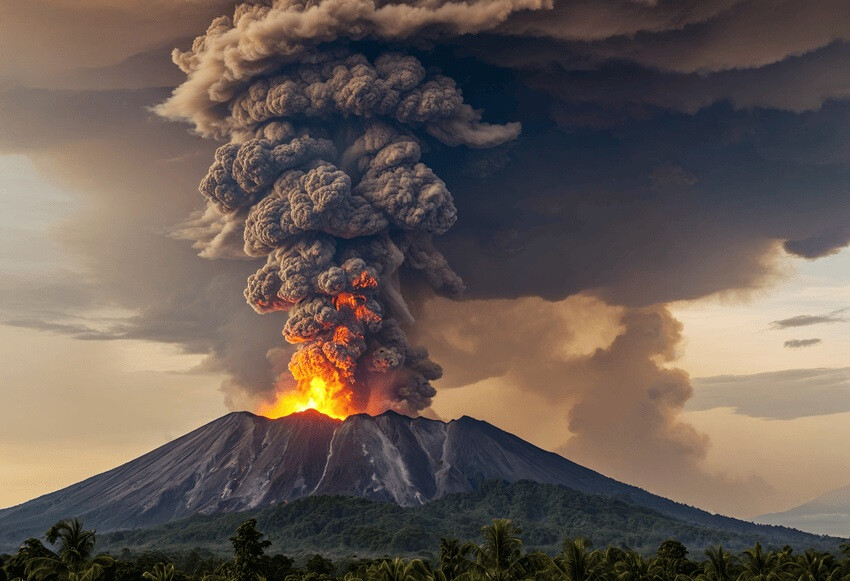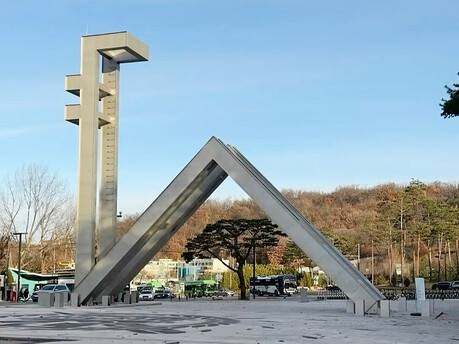
Negros Island, Philippines – Mount Kanlaon, an active volcano situated on Negros Island in the central Philippines, violently erupted early this morning, April 9th, unleashing a towering plume of ash approximately 4 kilometers (2.5 miles) into the atmosphere. The significant ashfall prompted authorities to suspend school classes in at least four nearby villages as a precautionary measure.
According to the Philippine Institute of Volcanology and Seismology (PHIVOLCS), the explosive eruption commenced at 5:51 AM local time, generating a massive, cauliflower-shaped ash column that drifted southwest. While the volcanic ashfall blanketed several rural communities, initial reports indicate no immediate casualties or significant property damage.
The area surrounding Kanlaon Volcano was already under an evacuation order following a previous eruption in December 2024. John de Asis, a local disaster management official, confirmed to AFP, "We were already prepared for this. We evacuated residents within the 4-6 kilometer radius during the last eruption in December."
Channell Nicor, a 22-year-old resident, witnessed the eruption while waiting for a bus to school. "We heard a loud rumble, like big rocks falling from a high place, and when we looked up, the ash cloud from the volcano was getting bigger," she recounted. "It wasn't as strong as the last eruption, but seeing the ashfall, of course, I felt uneasy. But this time, we knew what to do."
Following this latest activity, Alert Level 3 (out of a possible 5) remains in effect for Kanlaon Volcano, the same level issued during the December 2024 event. This indicates that there is a magmatic disturbance that could lead to a hazardous eruption.
Ben Edwards, a professor of Earth Sciences at Dickinson College in Pennsylvania, provided context in an interview with CBS Evening News Plus, stating, "Volcanic eruptions happen almost every day around the world. The Earth is made up of a series of plates, and most of the activity happens at the boundaries of those plates. Earthquakes, volcanic activity, all of that is related to the fact that we live on an active planet, and the ground beneath our feet is moving, very slowly, every day."
Kanlaon Volcano has a history of unrest. In September 2024, it emitted a substantial amount of toxic gas, leading to the evacuation of hundreds of residents. Tragically, a sudden eruption in 1996 resulted in the deaths of three hikers and required the rescue of several others.
The Philippines, situated within the seismically active Pacific Ring of Fire, is home to 24 active volcanoes, with Kanlaon being one of them. Authorities continue to closely monitor the volcano's activity and are prioritizing the safety and well-being of the affected communities. PHIVOLCS is expected to provide further updates as the situation evolves. Residents in the vicinity are urged to remain vigilant, adhere to evacuation orders if issued, and take necessary precautions against ashfall, such as wearing masks and staying indoors.
Additional Information:
Evacuation Zones: The permanent danger zone around Kanlaon is typically a 4-kilometer radius from the summit crater. Extended danger zones are often implemented during periods of heightened activity.
Health Concerns: Volcanic ash can be hazardous to human health, causing respiratory problems, eye irritation, and skin irritation. It can also disrupt infrastructure, including transportation and communication networks.
Agricultural Impact: Ashfall can significantly impact agriculture, damaging crops and contaminating water sources for livestock.
Monitoring Efforts: PHIVOLCS employs various monitoring techniques, including seismic sensors, gas emission detectors, and visual observation, to track the activity of Kanlaon and other Philippine volcanoes.
Community Preparedness: Regular drills and public awareness campaigns are conducted in communities near active volcanoes to educate residents on safety procedures during volcanic events.
This revised report provides a more comprehensive overview of the eruption, including potential impacts and the broader context of volcanic activity in the Philippines.
[Copyright (c) Global Economic Times. All Rights Reserved.]






























